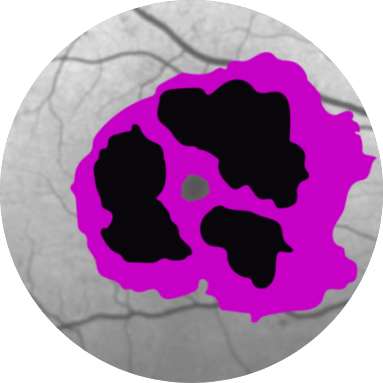Watch the video to get the facts about GA and how SYFOVRE works inside the eye
SYFOVRE is designed to slow the growth of GA lesions
It’s important to know that GA cannot be cured, and any damage cannot be reversed
Image of the retina in the back of the eye

GA lesion at diagnosis
GA lesion growth over time
Images for illustrative purposes only.
Reproduced with permission from Ruiz-Moreno et al. Fundus autofluorescence in age-related macular degeneration. AMD Book. 2017







 Back to top
Back to top